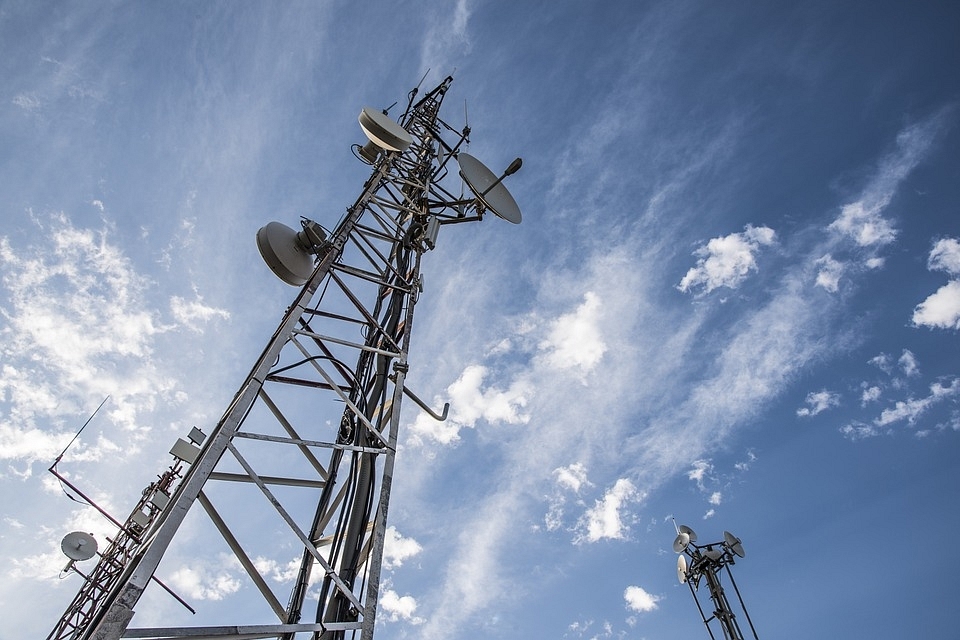Business
IUC Cut By TRAI And Stagnant User Base Will Make Telecom A Zero-Sum Game
- The future fight will be about expanding each operator’s high-spending customer base.
- The only way to grow is by greater innovation in products, and higher investments in improving services.

A telecom tower.
With the Telecom Regulatory Authority of India (TRAI) announcing that interconnect usage charges (IUC) will be cut from 1 October to 6 paise per call and completely eliminated by January 2020, telecom has essentially become a zero-sum game in the short run. What anyone gains will probably come only at the cost of some other incumbent.
The IUC rate, currently payable by calling parties to the network on which the call terminates, is 14 paise per call. In an ideal regime, each telecom company should decide its own charges for services, and there should be no mandate in favour of call receivers. But given the poor financials of the incumbents in a situation where Reliance Jio’s entry last year has dramatically reduced both data and voice tariffs (Jio offers “free” voice calls on its fully IP-based network), most of them are bleeding.
The cut in IUC, which will surely be challenged in court, is estimated by this Economic Times report to cost Airtel Rs 2,000 crore annually, and Vodafone and Idea Rs 1,500 crore and Rs 1,200 crore, while shifting this gain almost entirely to Reliance Jio. Midi-operators like Reliance Communications and Aircel (both set to merge) will make smaller gains. Mint offers another estimate of losses for incumbents.
Given the parlous state of the incumbents’ finances, TRAI would have done well to stagger the IUC cut by making smaller cuts upfront, and hastening it later. But now the incumbents will have to take the losses on the chin right from this year itself.
Since these losses will immediately mean a transfer of gains to one operator, it implies two things: it will be easier for Jio to grow its subscriber base and tougher for the rest. Which is why this will be a zero-sum game, and not a healthy development.
That the telecom market is saturated can be deduced from the July subscriber data released by TRAI, where there were no net additions. In fact, the industry reported a marginal loss of over 50,000 subscribers during the month. The total wireless user base fell from 1,186.84 million in June to 1,186.79 million in July.
But within the industry, a larger churn is taking place, with the gains largely accruing to Jio, and the rest losing customers.
In July, while Jio gained 5.21 million users to reach a total of 128.58 million, Vodafone, Idea and Tata Tele lost 1.38 million, 2.32 million, and 1.6 million – a combined loss of almost 5.30 million users between the three players. Airtel, the market leader, gained a marginal 0.6 million, but the company it is acquiring (Telenor) lost 0.27 million users.
What this churn suggests is that the big incumbents are financially exhausted, and will look for some concessions from the government to keep their heads above water over the next few quarters.
At 1.186 billion, effectively every Indian adult has probably got some kind of wireless phone, though this aggregate hides the fact that there is a significant ownership deficit in rural areas. Of the 1.186 billion, just over 500 million are rural users.
The market will grow, but this will have to happen by deepening spends per subscriber rather than by extending the user base.
Broadly speaking, barring rural pockets, growth is going to depend on extracting more from existing customers.
It is a zero-sum game on additions. The future fight will be about expanding each operator’s high-spending customer base. The only way to grow is by greater innovation in products, and higher investments in improving services.
Support Swarajya's 50 Ground Reports Project & Sponsor A Story
Every general election Swarajya does a 50 ground reports project.
Aimed only at serious readers and those who appreciate the nuances of political undercurrents, the project provides a sense of India's electoral landscape. As you know, these reports are produced after considerable investment of travel, time and effort on the ground.
This time too we've kicked off the project in style and have covered over 30 constituencies already. If you're someone who appreciates such work and have enjoyed our coverage please consider sponsoring a ground report for just Rs 2999 to Rs 19,999 - it goes a long way in helping us produce more quality reportage.
You can also back this project by becoming a subscriber for as little as Rs 999 - so do click on this links and choose a plan that suits you and back us.
Click below to contribute.
Latest